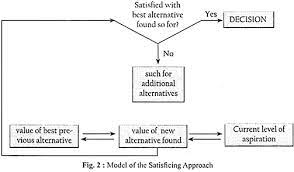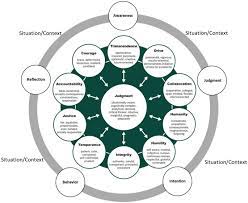Title: Exploring Various Group Decision-Making Techniques
Introduction:
In today’s interconnected world, decisions are rarely made in isolation. Many important choices are made within a group setting, where multiple perspectives and insights come together. Group decision making can be a powerful tool, harnessing the collective wisdom and expertise of individuals to arrive at the best possible outcome. In this article, we will explore several popular group decision-making techniques that can enhance collaboration, foster creativity, and lead to more effective outcomes.
Brainstorming:
Brainstorming is a widely recognized technique that encourages free-flowing idea generation within a group. Participants are encouraged to share their thoughts and ideas without judgment or criticism. This technique promotes creativity and allows for a wide range of perspectives to be considered. By creating an open and non-judgmental environment, brainstorming enables groups to generate innovative solutions.
Nominal Group Technique (NGT):
The Nominal Group Technique is designed to ensure equal participation from all members of a group while avoiding dominance by a few individuals. This technique involves several stages: first, participants generate ideas individually; then, they share their ideas in round-robin fashion without discussion or critique; finally, the group discusses and evaluates each idea collectively. NGT promotes equal input from all members and helps prevent any biases or undue influence.
Delphi Method:
The Delphi Method is particularly useful when dealing with complex or uncertain situations where expert opinions are valuable. It involves gathering input from experts through multiple rounds of questionnaires or surveys while maintaining anonymity among participants. The responses are then compiled and shared with the group for further evaluation and iteration until consensus is reached. The Delphi Method allows for diverse perspectives while minimizing the influence of dominant personalities.
Consensus Decision Making:
Consensus decision making aims to achieve agreement among all members of a group before moving forward with a decision. This approach fosters collaboration by actively seeking input and addressing concerns from all participants. Consensus decision making encourages open dialogue, active listening, and compromise. While it may take more time to reach a consensus, it ensures that decisions are supported by the entire group, leading to increased commitment and ownership.
Multi-Voting:
Multi-voting is a technique used to prioritize options or ideas within a group. Each participant is given a set number of votes that they can distribute among the available choices. This process helps identify the most preferred options and allows for focused discussions on those with the highest support. Multi-voting streamlines decision-making by narrowing down choices and highlighting the most popular ones.
Conclusion:
Group decision making can be a powerful tool when harnessed effectively. By utilizing techniques such as brainstorming, Nominal Group Technique (NGT), Delphi Method, consensus decision making, and multi-voting, groups can tap into their collective intelligence to make well-informed decisions. Each technique brings its own unique benefits and considerations, allowing groups to tailor their approach based on specific circumstances. By embracing these techniques, organizations and teams can unlock their full potential for collaborative problem-solving and achieve better outcomes together.
Effective Group Decision Making: 5 Techniques for Success
Utilize Brainstorming
Utilize Brainstorming: Unlocking the Power of Group Creativity
When faced with complex decisions, harnessing the collective creativity and knowledge of a group can lead to innovative and effective solutions. One powerful technique for group decision making is brainstorming. This method encourages participants to generate ideas freely, without judgment or criticism, fostering an environment where creativity can thrive.
Brainstorming is a simple yet powerful technique that can be applied in various settings, from business meetings to team projects and even personal decision making. By allowing individuals to share their thoughts and ideas openly, brainstorming creates a space where diverse perspectives can come together.
During a brainstorming session, it’s important to set clear guidelines. Emphasize that all ideas are welcome, no matter how wild or unconventional they may seem. Encourage participants to build upon each other’s ideas and think outside the box. By suspending judgment and criticism, you create an atmosphere that promotes free thinking and encourages participants to explore new possibilities.
The beauty of brainstorming lies in its ability to generate a wide range of ideas. Quantity is valued over quality during this stage. The more ideas generated, the greater the pool of options available for evaluation later on. Remember, even seemingly impractical or outlandish ideas can spark inspiration and lead to breakthrough solutions.
To make the most out of a brainstorming session, consider using visual aids such as whiteboards or sticky notes. These tools allow participants to visually organize their thoughts and build upon each other’s contributions. Encourage active participation from everyone involved by giving each person equal opportunity to share their ideas.
Once the brainstorming session concludes, it’s time to evaluate the generated ideas collectively. This stage involves discussing each idea’s feasibility, potential benefits, and drawbacks as a group. By involving everyone in the evaluation process, you ensure that diverse perspectives are considered before making any decisions.
Utilizing brainstorming as part of your group decision-making process can yield numerous benefits. It encourages collaboration, enhances creativity, and allows for a wide range of perspectives to be explored. By embracing this technique, you tap into the collective intelligence of your team or group, unlocking innovative solutions that may have otherwise gone unnoticed.
In conclusion, when faced with complex decisions that require input from multiple individuals, don’t underestimate the power of brainstorming. Embrace this technique to foster a collaborative environment where creativity can flourish. By utilizing brainstorming effectively, you’ll unlock the full potential of your group’s collective wisdom and pave the way for successful decision making.
Divide and Conquer
Divide and Conquer: A Powerful Approach to Group Decision Making
When faced with complex decision-making tasks, the “divide and conquer” approach can be a valuable technique to employ within a group setting. This strategy involves breaking down a larger problem or task into smaller, more manageable parts, allowing each member of the group to focus on a specific aspect.
By dividing the decision-making process, groups can effectively utilize their collective strengths and expertise. Here’s how this approach can enhance group decision making:
- Specialization and Efficiency: Dividing the task among group members allows individuals to concentrate on their areas of expertise. Each member can bring their unique skills and knowledge to the table, leading to more efficient problem-solving. By assigning specific responsibilities, the group can work in parallel, saving time and ensuring thorough exploration of all aspects of the decision.
- Increased Collaboration: Dividing the workload encourages collaboration among group members. Each person’s contribution becomes essential in achieving a holistic understanding of the problem at hand. Regular communication and information sharing become crucial for successful integration later in the decision-making process.
- Diverse Perspectives: When different individuals tackle different parts of a problem, it opens up opportunities for diverse perspectives and insights. Each team member brings their own experiences, biases, and approaches to solving problems, which can lead to more comprehensive solutions. By considering multiple viewpoints, groups are better equipped to identify potential risks or opportunities that may have been overlooked otherwise.
- Efficient Resource Allocation: Dividing tasks also allows for efficient resource allocation within a group. By assigning responsibilities based on individual strengths or available resources, groups can optimize time management and maximize productivity.
However, it is important to ensure effective coordination and integration as well. Here are some tips for implementing Divide and Conquer effectively:
– Clear Communication: Establish open lines of communication among team members throughout the process. Regular updates on progress, challenges faced, and potential dependencies will help maintain a cohesive approach.
– Regular Check-Ins: Schedule periodic check-ins or meetings to share findings, insights, and updates. This ensures that the group remains aligned and any potential conflicts or overlaps are addressed promptly.
– Integration and Synthesis: Once each team member has completed their assigned task, it is crucial to bring all the information together. This step involves synthesizing individual findings, identifying commonalities, resolving conflicts, and making a collective decision based on the comprehensive understanding of the problem.
The “divide and conquer” approach can be a powerful tool for effective group decision making. By dividing complex tasks into manageable parts and leveraging the diverse strengths of group members, this technique enables efficient collaboration, comprehensive problem-solving, and optimal resource allocation. Embracing this strategy can lead to more informed decisions and better outcomes for the entire group.
Promote Open Communication
Promote Open Communication: The Key to Effective Group Decision Making
When it comes to group decision making, one fundamental tip stands out above the rest: promote open communication. Open communication is the cornerstone of effective collaboration within a group setting. By fostering an environment where every member feels comfortable expressing their thoughts, ideas, and concerns, groups can unlock their full potential and make better decisions collectively.
Open communication allows for the free exchange of information, perspectives, and insights. It encourages active listening and respectful dialogue among group members. When individuals feel heard and valued, they are more likely to contribute their unique viewpoints and expertise. This diversity of input leads to a broader understanding of the problem at hand and opens up possibilities for innovative solutions.
Promoting open communication also means creating a safe space where individuals can express dissenting opinions without fear of judgment or retribution. Encouraging constructive criticism helps challenge assumptions, identify blind spots, and uncover potential risks or drawbacks associated with different options. This critical evaluation is essential for making well-informed decisions that consider all angles.
In addition to verbal communication, non-verbal cues should also be considered. Paying attention to body language, facial expressions, and other non-verbal signals can provide valuable insights into how individuals are truly feeling about a particular decision or idea. Encouraging openness in both verbal and non-verbal communication creates an inclusive atmosphere that fosters trust and cooperation.
To promote open communication within your group decision-making process:
- Establish clear guidelines: Set ground rules that emphasize active listening, respect for differing opinions, and constructive feedback.
- Encourage participation: Create opportunities for every member to contribute by actively seeking input from all participants during discussions or meetings.
- Embrace diversity: Recognize that diverse perspectives enrich the decision-making process. Encourage individuals from different backgrounds or roles to share their unique insights.
- Foster psychological safety: Ensure that all members feel safe expressing their thoughts and ideas without fear of ridicule or negative consequences.
- Practice active listening: Encourage individuals to listen attentively to one another, seeking to understand different viewpoints before responding.
- Provide feedback and recognition: Regularly acknowledge and appreciate the contributions of all members, reinforcing the value of open communication.
By promoting open communication, groups can tap into the collective intelligence of their members, leading to more informed decisions and increased group cohesion. Remember, effective group decision making is not about silencing dissenting voices but rather about embracing diverse perspectives and leveraging them to achieve the best possible outcomes.
Be Flexible
In the realm of group decision making, one valuable tip that often gets overlooked is the importance of being flexible. Flexibility plays a crucial role in ensuring that the decision-making process remains dynamic, adaptable, and open to new ideas.
When groups come together to make decisions, it is common for individuals to have their own preconceived notions or preferred solutions. However, being rigid and unwilling to consider alternative perspectives can hinder the group’s ability to explore all possible options. This is where flexibility becomes essential.
Being flexible means being open-minded and receptive to different viewpoints. It involves actively listening to others, considering their ideas with an open heart and mind, and being willing to modify your own opinions if a better solution emerges. Flexibility encourages collaboration, creativity, and innovation within the group.
By embracing flexibility in group decision making, you create an environment that fosters trust and respect among team members. When everyone feels heard and valued, they are more likely to contribute their unique insights without fear of judgment or rejection. This diversity of perspectives can lead to more comprehensive evaluations of potential solutions.
Flexibility also allows groups to adapt their decision-making approach as circumstances evolve or new information surfaces. It enables them to pivot when necessary and make informed adjustments based on emerging factors. By remaining flexible throughout the process, groups can respond effectively to changing conditions and make decisions that are relevant and timely.
Furthermore, being flexible helps mitigate conflicts that may arise during group decision making. When individuals are willing to compromise or find common ground, it reduces tension and promotes harmony within the group. This collaborative spirit encourages constructive discussions where disagreements can be resolved through respectful dialogue rather than becoming roadblocks.
In conclusion, being flexible is a valuable tip for enhancing group decision making. It empowers individuals to embrace diverse perspectives, adapt their thinking when necessary, and foster a collaborative environment where everyone’s voice is heard. By embodying flexibility in the decision-making process, groups can unlock their collective potential, explore a wider range of options, and ultimately arrive at more effective and inclusive decisions.
Set Deadlines
Setting Deadlines: A Key to Effective Group Decision Making
In the realm of group decision making, time can be both a friend and a foe. Without clear deadlines, discussions can drag on indefinitely, leading to indecisiveness and frustration. On the other hand, setting deadlines can provide structure and focus, ensuring that decisions are made in a timely manner. In this article, we will explore the importance of setting deadlines in group decision making and how it can enhance the effectiveness of the process.
Deadlines create a sense of urgency within a group, prompting members to prioritize their efforts and make decisions within a specified timeframe. When participants know that there is a deadline looming, they are more likely to stay focused and actively engage in discussions. This helps prevent decision-making processes from becoming stagnant or endlessly debated.
Furthermore, deadlines promote accountability among group members. When everyone is aware of the time constraints, they are more inclined to contribute their ideas, opinions, and insights in a timely manner. Deadlines encourage individuals to prepare in advance and come prepared for meetings or discussions with well-thought-out contributions. This ensures that decision-making sessions are productive and efficient.
Setting deadlines also allows for better planning and resource allocation. With clear timeframes established, groups can allocate their resources effectively to meet the set deadline. This includes allocating sufficient time for research, gathering necessary information, conducting analyses if required, and allowing ample time for deliberation. Deadlines help prevent unnecessary delays or rushed decisions by providing a structured timeline.
In addition to enhancing efficiency and productivity, deadlines foster commitment among group members. When individuals know that there is an endpoint in sight, they are more likely to commit fully to the decision-making process. Deadlines create a shared sense of responsibility towards achieving the desired outcome within the given timeframe.
However, it is important to set realistic deadlines that consider the complexity of the decision at hand and allow enough time for thorough discussion and evaluation. Unrealistic or overly tight deadlines can lead to rushed decisions, potential oversights, and increased stress among group members. It is crucial to strike a balance between setting a deadline that provides a sense of urgency and allowing sufficient time for thoughtful consideration.
In conclusion, setting deadlines is a vital aspect of effective group decision making. Deadlines provide structure, focus, and accountability within the decision-making process. They promote efficiency, productivity, commitment, and better resource allocation. By incorporating deadlines into the decision-making framework, groups can ensure that decisions are made in a timely manner without sacrificing the quality of the outcome.




